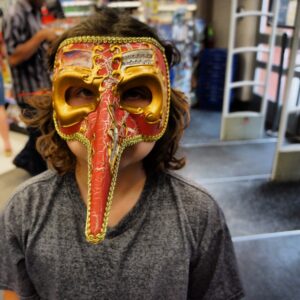You probably already know how great referrals are. Getting business effortlessly is an excellent feeling.
But what if there was a way to exponentially increase referrals or awareness?
What if you could market your brand to millions of people, yet retain the authenticity that comes with it?
The method is already here: it’s called influencer marketing.
Why social influencers are so powerful
Social media sites are excellent outlets for marketing: they allow your brand to instantly connect with a huge audience of people. Take these stats into account:
- 74% of consumers rely on social media to inform their purchasing decisions.
- 90% of consumers trust peer recommendations. Only 33% trust ads.
- 90% of marketers have said Earned Media will have a significant impact on their strategy by 2014.
[Tweet “74% of consumers rely on social media to inform their purchasing decisions via @bryankramer.”]

While people will still consume and engage with content from brands, they do so in a much more guarded way than with real people. Contently says that two-thirds of all readers feel deceived after learning that a video or article was sponsored by a brand. Over half of all readers feel that sponsored content is untrustworthy.
Realizing this, savvy marketers have started to recruit real people to help spread a positive message about their products and services. By choosing people who already have a built-in audience, brands can instantly find and connect with new prospects that are interested in what they have to offer.
Creating content together
“But wait,” you’re probably asking, “Don’t brands already do this by hiring celebrities and athletes to promote their products?” Of course. But who wants to be told by a multi-millionaire which kind of soft drink they should be drinking, or what kind of car they should be driving? People know that athletes get beaucoup money from big brands to endorse their products, and it turns them off. Shaquille O’Neal, one of the best NBA players in history, is reportedly making more money from endorsements after retirement than he did as a player.
Social influencers are much more relatable. Instead of paying a celebrity to smile and hold a product, marketers that depend on social influencers are asking real people to use their product and give an honest opinion. Yes, some social influencers are compensated, but that’s not the focal point like it is with athlete endorsements.
The key difference: Influencers are creating content with brands, not for them.
[Tweet “Influencers are creating content with brands, not for them via @bryankramer”]
Take NordicTrack, the famous fitness equipment company. Earlier this year, the company invited twelve major YouTube influencers to create a fun dance video using their treadmills. The result? 3.7 million views, and a countless number of spin-offs across almost every social media network, one of which even earned a place on the Ellen Degeneres show. By finding people with a built-in audience and creating an honest connection with them, NordicTrack was able to boost their engagement.
Measuring social influence
“But Bryan,” you’re probably asking, “How do I know it works? Where do I see what the ROI is? And how do I know who has the biggest influence?”
Man, you ask a lot of questions ☺
It’s true that the ROI of influencer marketing isn’t always easy to measure. But even if you can’t tie social influencer marketing back to hard dollars, you can still measure numbers like:
- Page views
- Shares
- Likes
- Comments
- Web traffic
These metrics all create engagement with your audience, which naturally leads to sales.
As far as measuring social influence, there are a number of popular tools for this: Kred, Klout, Crowdbooster, and more. I tend to think you need to use them all as benchmarks but they aren’t the end all for what makes someone influential. Whatever method you choose, make sure that you approach influencers honestly and openly, and tell them what’s in it for them. There must always be something in it for any influencer, otherwise pack your bags. With the right approach and some effort, you can use the power of social influencers to give your brand a serious marketing jolt.
[Tweet “There must always be something in it for any influencer, otherwise pack your bags via @bryankramer”]
Key Takeaway: Social influencers have a more authentic relationship with brands than sponsored celebrities. Approach influencers the right way, create content with them, and track your engagement statistics instead of only tying your influencer marketing back to revenue.





